Dolphin and whale watching in the Canary Islands is one of the most popular activities on this Spanish archipelago off the coast of Morocco. If you are passionate about dolphin and whale watching, there is a place in the Canary Islands that is amongst the best in the world. Tenerife is home to the Teno-Rasca Marine Strip which stretches between the south coast of Tenerife and the island of La Gomera.
Included in the European network of protected areas, called Natura 2000 project, its area is extremely large, covering 69,489.68 hectares. Numerous marine species can be found in this section of the ocean thanks to strict regulations concerning its protection. Furthermore, the consistency of the water temperature near the island of Tenerife, between 18 and 20 degrees, and the depth of the ocean, between 1500 and 2400 m, provide an ideal habitat for cetaceans.
In the article, you will find out more about the animals that can be spotted on a boat trip from Tenerife. I will also explain the different types of boat trips and the best time to go dolphin and whale watching in the Canary Islands.
What can I see during a dolphin and whale watching boat trip in the Teno-Rasca Marine Strip in the Canary Islands?
During a dolphin and whale watching boat tour, there will be a guide to help you distinguish between the various species of cetaceans and other animals and tell you interesting facts about them.
Cetaceans

©Tenerife Sailing Charters 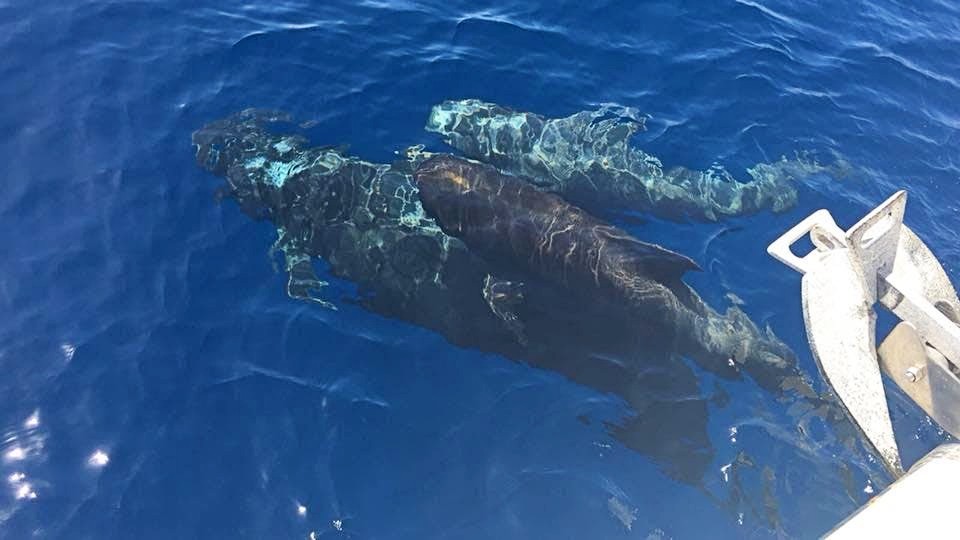
©Monte Cristo Catamaran Tenerife 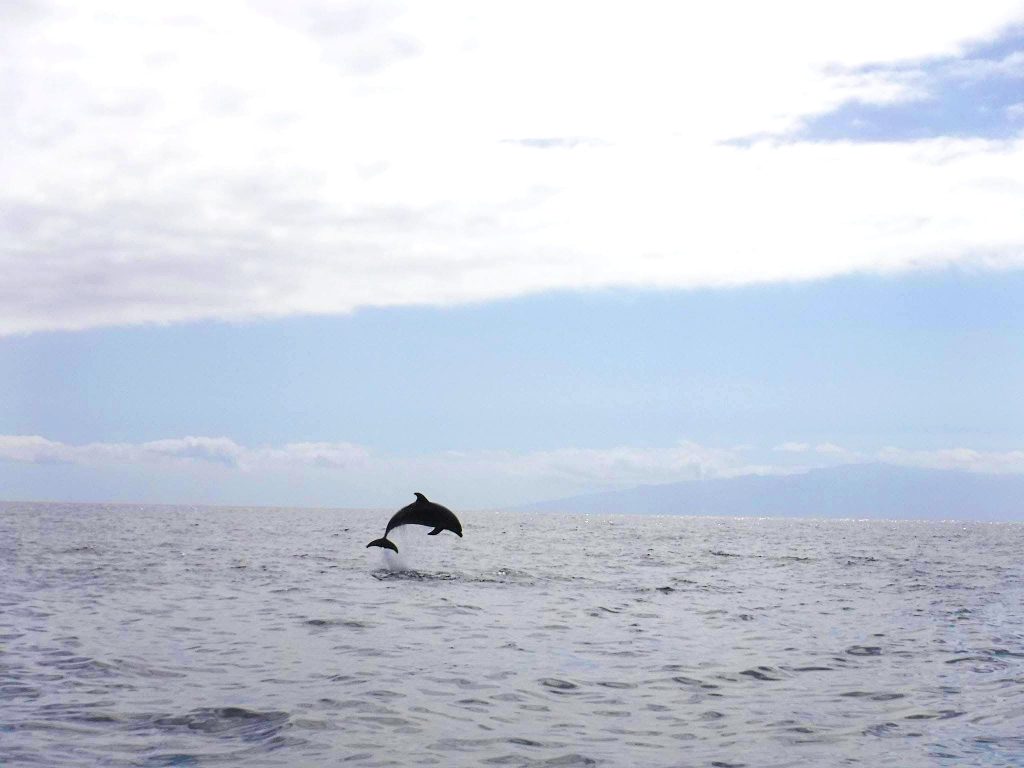
©Water Sports Tenerife 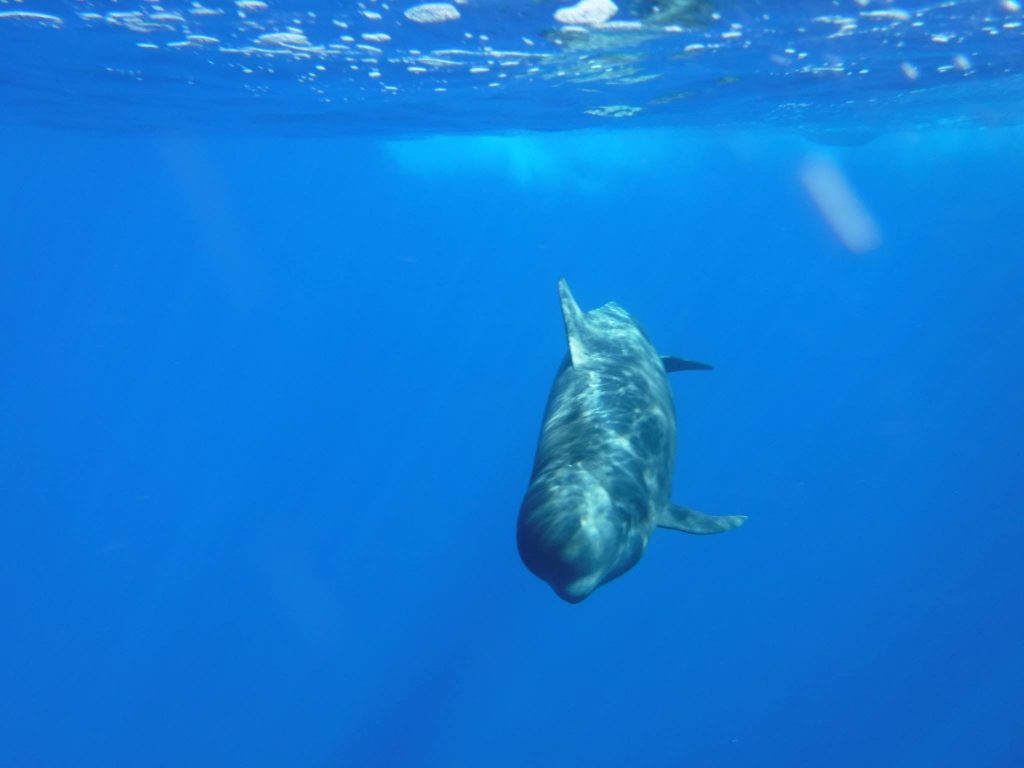
©Water Sports Tenerife
Taking a dolphin and whale watching boat trip from Tenerife, you will head to the Teno-Rasca Marine Strip, as this is where it is easiest to spot wild animals. Indeed, the World Cetacean Alliance made this same stretch of ocean the first Whale Heritage Site in Europe and third in the world after Bluff in South Africa and Harvey Bay in Australia.
There are 2 species of cetaceans that are permanent residents in the Teno-Rasca Marine Strip: the Short Finned Pilot Whale and the Bottlenose Dolphin. Although they are amongst the most common species to be found in this area, they are no less exciting to see.
- The Short Finned Pilot Whale, in fact, can grow up to a length of 5 metres, which is quite remarkable.
- The Bottlenose Dolphin, on the other hand, has a habit of living in large groups of up to 30 individuals. That usually means, when you spot one, you can be sure that there are others nearby.
In addition to these two cetacean species, there are many other animals to be seen in the Teno-Rasca Marine Strip. Throughout the year and with a little more luck, it is possible to see 4 more species of dolphins, one of them being the Atlantic Spotted Dolphin. There are also 2 more species of whales that are often encountered in this region. The Sperm Whale is an enormous cetacean that can weigh up to 54.000 kg and which frequents the Teno Rasca strip in search of its favourite meal: the giant squid. Besides the Sperm Whale, there have also been some very rare sightings of Killer Whales as well.
Furthermore, during the migratory period (winter and early spring), there is a higher likelihood of seeing even more types of aquatic animals such as the Common Dolphin or the False Killer Whale.
Sea turtles
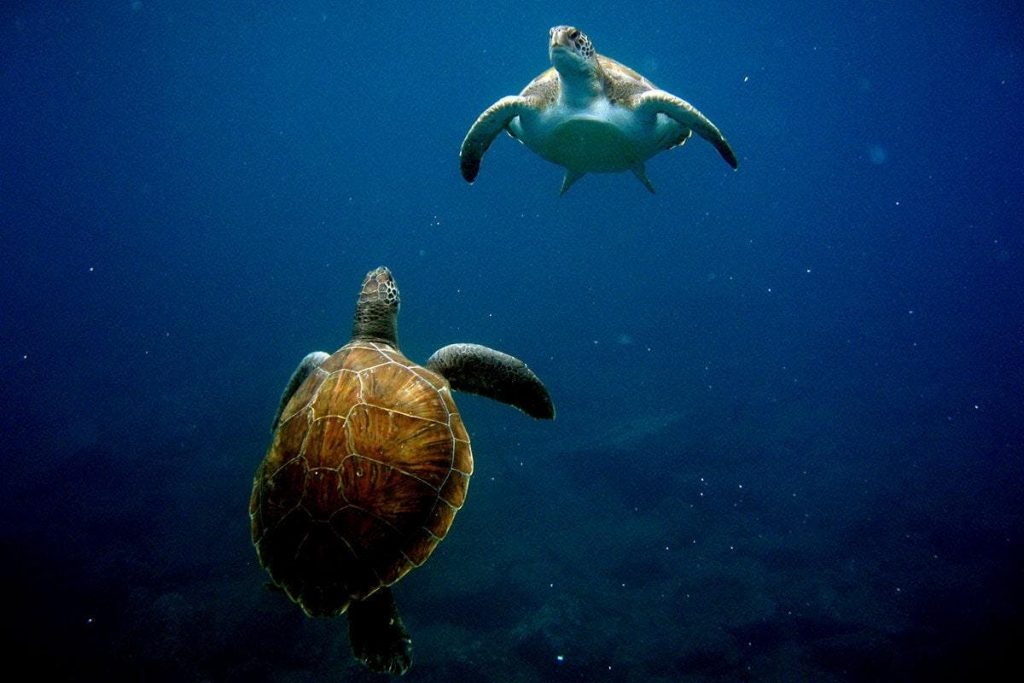
Another very fascinating marine animal that can be encountered in the Teno Rasca Strip is the sea turtle. While they are typically more difficult to spot, sightings include the following species:
- Loggerhead Turtle (Caretta caretta), a highly endangered species in the Mediterranean, found off the coast of countries such as Syria, Tunisia, Egypt and parts of Greece. In Crete, for example, it can sometimes be spotted near the beaches of Balos and Elafonisi, and, while almost extinct in the seas of Italy, sightings have been reported in areas such as Salento (Apulia) and Lampedusa.
- Green Turtle
- Hawksbill Turtle
- Leatherback Turtle
Birds
Nevertheless, on a boat trip for dolphin and whale watching you will not only look at what is swimming in the ocean. Your eyes will also be drawn upwards to see some majestic birds flying above your head. The most interesting is the Osprey bird, which is an endangered bird and therefore listed as a protected species.
Best time to go dolphin and whale watching in the Canary Islands
In the Tenerife area, it is possible to go on a dolphin and whale watching boat trip all year round. As previously mentioned, the Short Finned Pilot Whale and the Bottlenose Dolphin are present all year round and chances of spotting them on a boat trip are very high. For other species, the likelihood of spotting them depends on their migration, which occurs in winter and early spring.
Different types of boat trips for dolphin and whale watching
Glass bottom boat trip for dolphin and whale watching
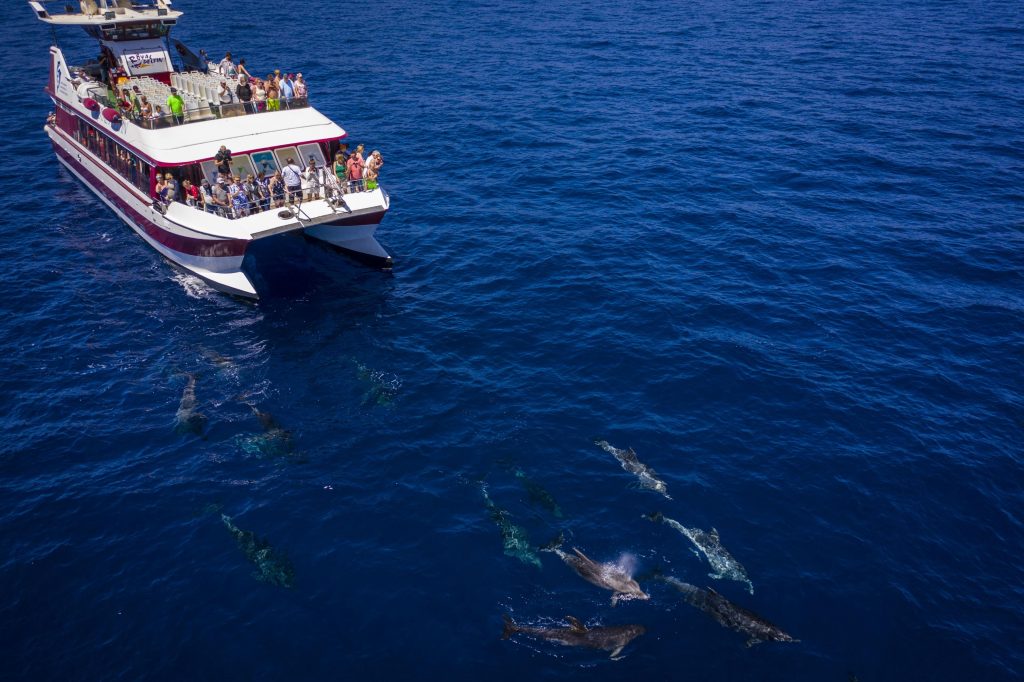
©Tenerife Dolphin 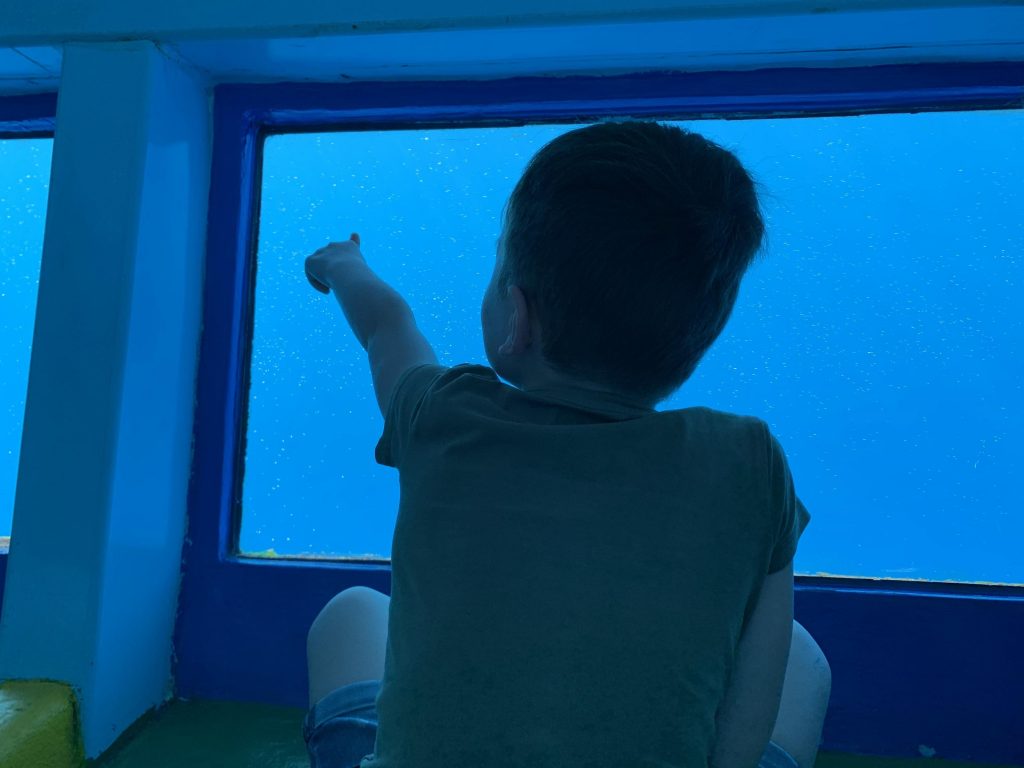
A child watches cetaceans during a boat trip from Tenerife. 
©Tenerife Dolphin
Unlike on any other dolphin and whale watching boat trip, glass-bottom boats make for an even better wildlife watching experience. Here, you can watch the animals from above the surface of the sea, as you do on other boats, but you can also watch them below the surface. This way, you will be on the same level as the animals and get right up close and personal with them. This is a unique experience and totally worth it.
Sailing tour with dolphin and whale watching
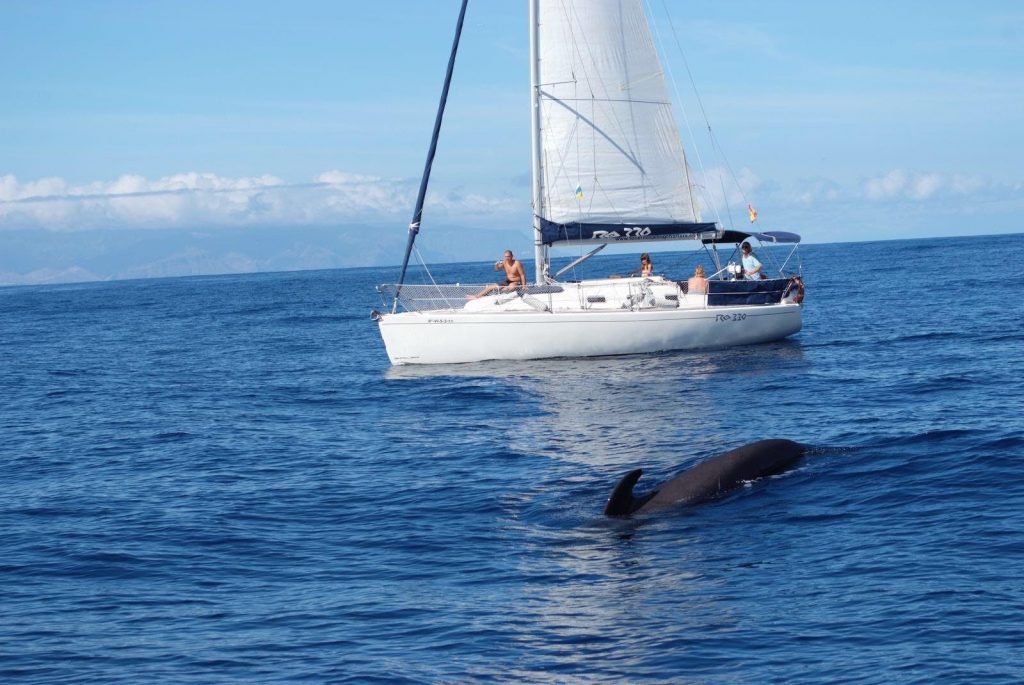
Sailing is a more private type of experience because the number of people on board with you is very small. Together with 10-15 other people, you can enjoy the boat ride and spot cetaceans. The advantage of sailing is that you can proceed without making any noise, which is great because the animals will not be frightened and will not be scared away from the boat.
Are there other places in the Canary Islands where you can go whale and dolphin watching?
Due to their relatively homogenous conditions, it is possible to see dolphins and cetaceans in many parts of the Canary Islands. Apart from the Teno-Rasca Marine Strip in Tenerife, there are undoubtedly other areas, such as for example Fuerteventura, where many wildlife experts offer dolphin and whale watching boat tours. However, the protected area on the south coast of Tenerife seems to be a preferred spot for cetaceans and, thanks to the Natura 2000 project, the conditions here are preserved by regulations.
If you are on holiday on another island in the Canaries, you might have fewer opportunities to spot dolphins and whales, but it is still worth taking a boat trip to explore the beautiful coastline.
